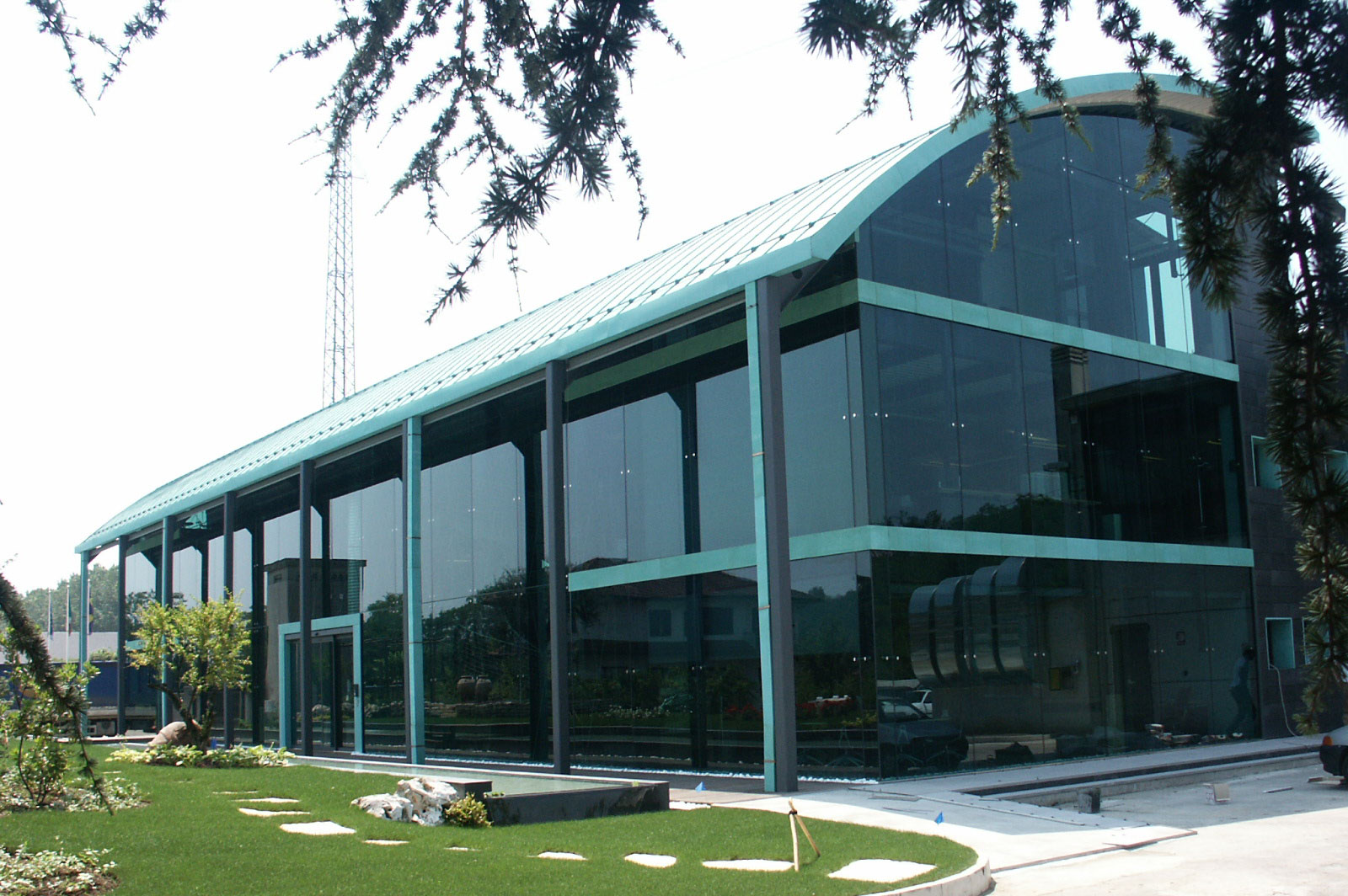
ZMC – Varese (Italy)
4 May 2019Client:
De' Longhi S.p.a.
Architect:
Giorgio Signorotto
Customer:
Aisa S.r.l.
Builder:
Aisa S.r.l. , Soligo (TV)
The building of the new De 'Longhi’s head offices in Treviso foresees the construction of three particular Scai Tech tensile-facades with point-fixed glass, characterized by maximum lightness of the glass suspension system and the use of fine finishes, obtaining a high-quality architectural partition aesthetic content.
Two of these types, located in the Hall area of the building, are mirrored to each other and each is inserted in a perimeter bearing frame in reinforced concrete covered with tapered metal cladding.
The third type closes the fully glazed corner of the building in correspondence with the internal stairwell.
The primary structure, also made of reinforced concrete, has a cylindrical corner pillar, made of reinforced concrete covered in steel, which is also used for fixing the supporting elements of the facade.
Characteristic of the system adopted is the use of a tensile structure with pre-tensioned and intertwined steel cables, with a maximum height of 17 meters (around 56 feet), which are tensioners and cable terminals fixed with special brackets to the supporting structure.
In correspondence of the crossing points of the cables, cylindrical struts in stainless steel, with a polished finish, specially made in the workshop, are inserted.
On these struts are fixed the steel stars designed to accommodate the specific elements suitable for hanging the double glazing of the large facades.
The activity of Studio Cattivelli / SCAI TECH foresees the development of the executive and construction project aimed at the production and installation of each single component, the choice of materials and the static analysis of the system, carefully evaluating the maximum deformations allowed by the main structures in reinforced concrete.
In order to guarantee the correct performance of the designed system tear tests on the screws, tightening tests on the terminals with sliding / extraction of the ropes and resistance tests on the struts were carried out in the laboratory and on site.






